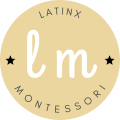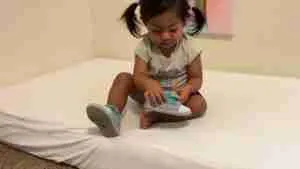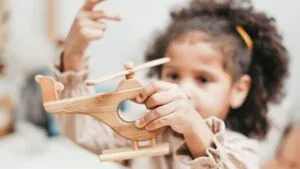
Lovevery Play Kits Reviews 2023: Our Honest Opinion
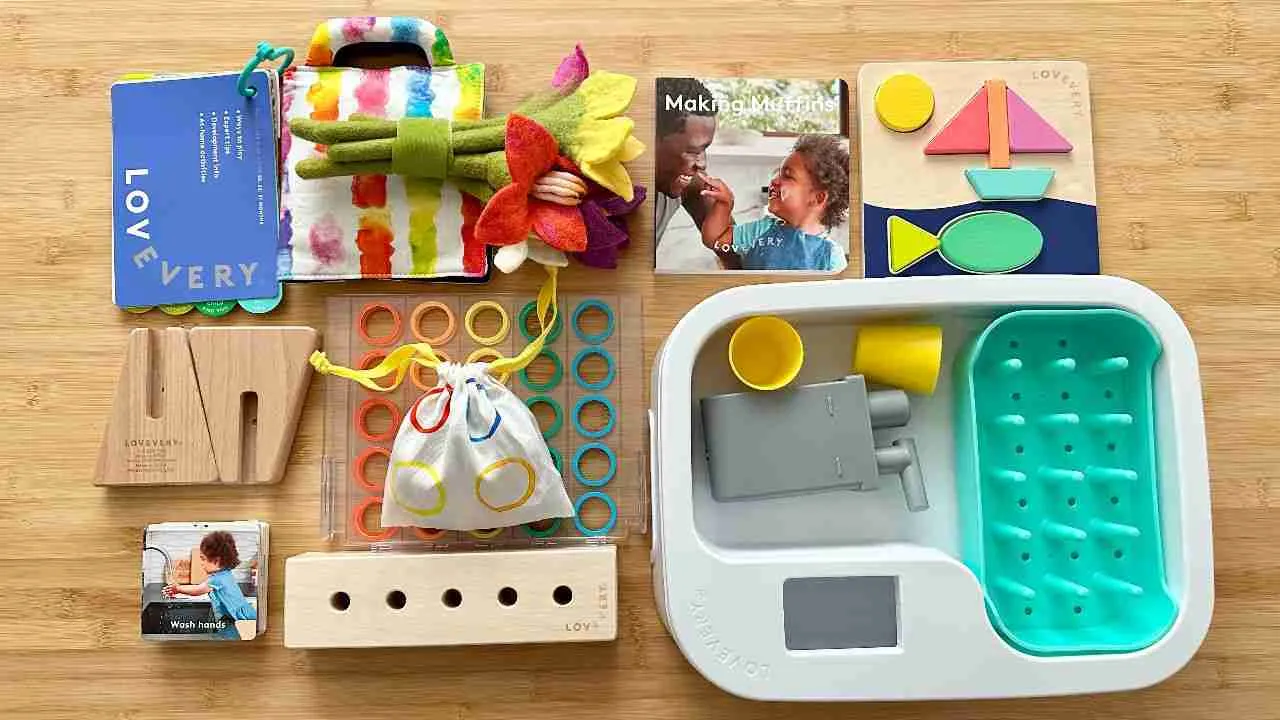
*Disclosure: I only recommend products I would use myself and all opinions expressed here are our own. This post may contain affiliate links that at no additional cost to you, I may earn a small commission. Thank you for your support!
Share this post
This is our detailed review of the Lovevery Helper Play Kit. The Helper Play Kit is the first subscription box for 2-year-olds and includes activities for months 25, 26, and 27.
But is it worth it?
Yes, if you can afford it. Each item in the kit has been carefully selected to help your child improve their motor skills and independence through practical life activities.
We will go into more detail about each item in the Helper Play Kit and share how our child interacted with each item, what worked and what didn’t, and my overall opinion about the kit.
When you are ready to enroll in the Play Kit subscription, you can use my unique link to save 10% when you prepay for 3+ kits.
In full transparency, Lovevery sent us this kit to review. This review is 100% our own.
In a nutshell:
The Helper Play Kit has various activities for the next three months. Your child will work on developing their motor skills and basic counting.
Every child develops at their own pace and has different interests. Therefore your child may not use all of the items in the kit.
The price of each kit is a bit high and not everyone can afford them. You may be able to find good alternatives on Amazon.
You get what you get. Every item in each kit has been selected by Lovevery.
Lovevery Play Kits Reviews
Here is the list of all the items included in the Helper Play Kit:
- Super Sustainable Sink With Bio-Based Cups & Plates. This is a fun, battery-operated sink with running water.
- Drop & Match Dot Catcher. This is a great activity to help your child learn colors and numbers.
- Felt Flowers in a Row. This helps your child improve motor skills and coordination.
- Double-Sided Sunny Day Puzzle. This puzzle can be challenging for your child and improves their concentration and critical thinking skills.
- Anywhere Art Kit With Washable Tempera Paint Sticks. This art kit is great to take with you everywhere you go.
- Let’s Map It Out Routine Cards. These cards can help your child plan daily routines.
- ‘Making Muffins’ Board Book. A fun recipe book to make muffins with your child.
- Play Guide for Months 25, 26, 27. Guide to help you use the contents of this kit effectively.
Now I am going to share our experience with each item, how my daughter interacted with them, and give my honest opinion on each item.
The Play Guide
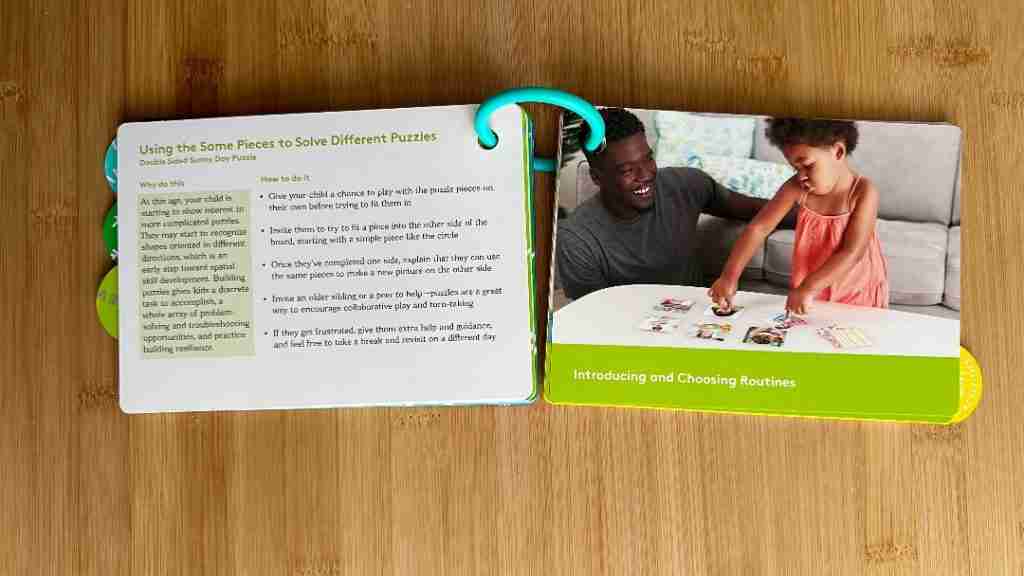
I want to start with the guide because it will give you some direction and tips to use the Helper Play Kit. This guide is going to help you if you are new to Lovevery Play Kits.
It will tell you what skills your child will improve from each activity such as motor skills development, language and communication, math, and independence.
It gives you a list of instructions on how to use each item in the play kit and how to make the activity more engaging.
The guide also includes additional and fun activities to do with your child but they are not related to the play kit.
To use each item to its full potential, you have to get creative and think outside the box to come up with more creative ideas to play.
Your child will lose interest in the toys if all you do is what is described in the guide. So I encourage you to get creative and go beyond what the guide says.
The Super Sustainable Sink

Our daughter loves water play and this sink was just right for her. The sink comes in two pieces. The bottom piece holds the water and the top piece holds the dish rack, cups, plates, and faucet with pump.
It is very easy to assemble. All you have to do is install the batteries, fill up the bottom portion of the sink to the fill line, snap the pump and faucet in place, and you’re done!
The sink will circulate the water back to the pump as your child plays with it.
Overall I think your child will have fun playing with the sink. However, as a Montessori Guide, we follow the Montessori method in our home and our daughter uses the real sink.
We got our daughter a learning tower when she was about 11 or 12 months old so she could be involved in the kitchen.
Now at almost 2 years old, she is using the real sink to wash her hands and is learning how to wash real dishes and utensils.
We have a faucet extender so our daughter can use the sink. We much prefer to have the learning tower and faucet extender because she does real-life tasks.
So what’s our verdict on the sink?
If you don’t have a learning tower that allows your child to use your real sink, then your child will have fun using this sink.
The Dot Catcher
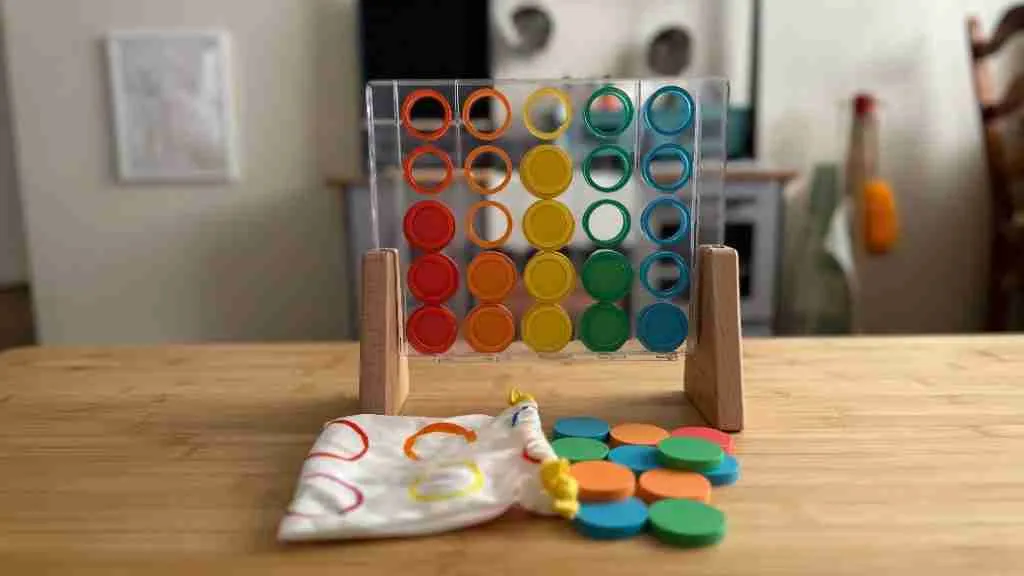
My daughter likes the dot catcher a lot but it is still a bit advanced for her.
She is currently learning the colors so I think this toy is great to keep practicing the colors. Initially, she would just put the dots in random orders and she had fun doing it.
But we began asking the color of each dot and where it should go. She is learning how to match each dot with its respective column.
I think this is a great item that we will continue to use for a long time and it can also become a family game.
One thing to note is that the dots are too small and can be a choking hazard. My daughter likes to put them in her mouth so we are constantly reminding her that it is dangerous when she puts the dots in her mouth.
So just be very careful when your child plays with the dot catcher and supervise them at all times.
The Felt Flowers
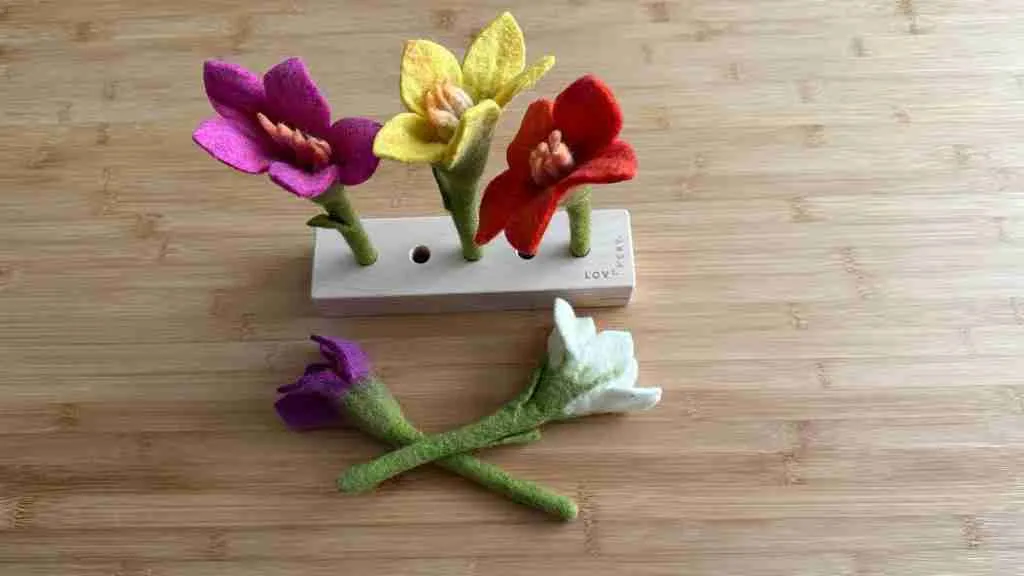
We love the quality of the felt flowers and our daughter likes to play with them. She has great motor and coordination skills and was able to put the flowers on the wooden stand.
Now we are working on identifying the color of each flower and counting them.
We like to ask her, “Which one is the white flower?” She would pick up the white flower and then have her choose where to place the flower.
This is a great item to learn about math and colors, plus it looks great on her Montessori shelf.
The Double-Sided Puzzle
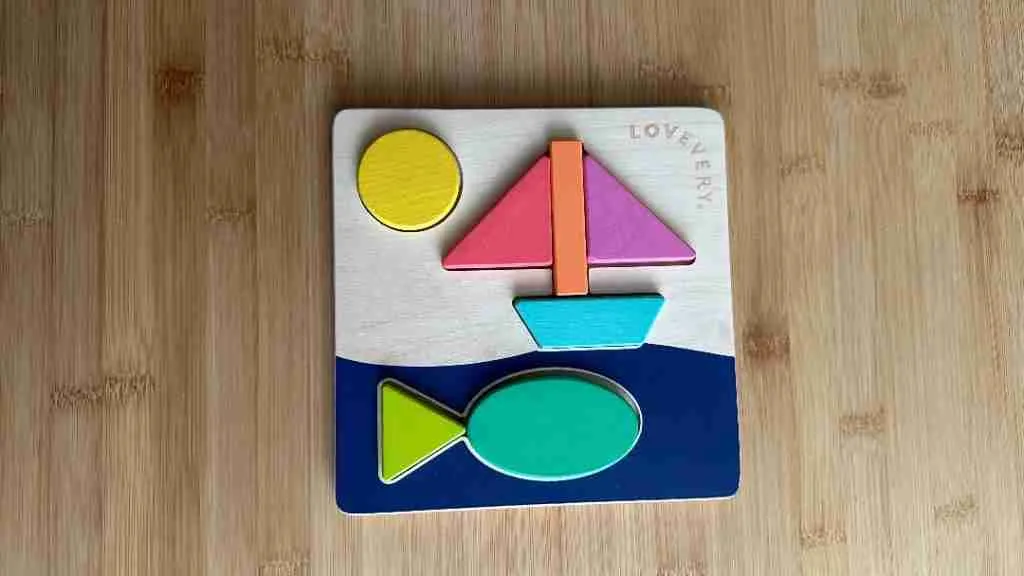
The puzzle is still a bit advanced for her and she showed very little interest. We tried showing her how to complete the puzzle but she got a bit frustrated.
So far we haven’t used it so it is stored away for future use, but if your child is ready for challenging puzzles, then this is a great option.
What we like about the puzzles is that it is double-sided and you can complete two puzzles with the same pieces.
The Art Kit With Paint Sticks
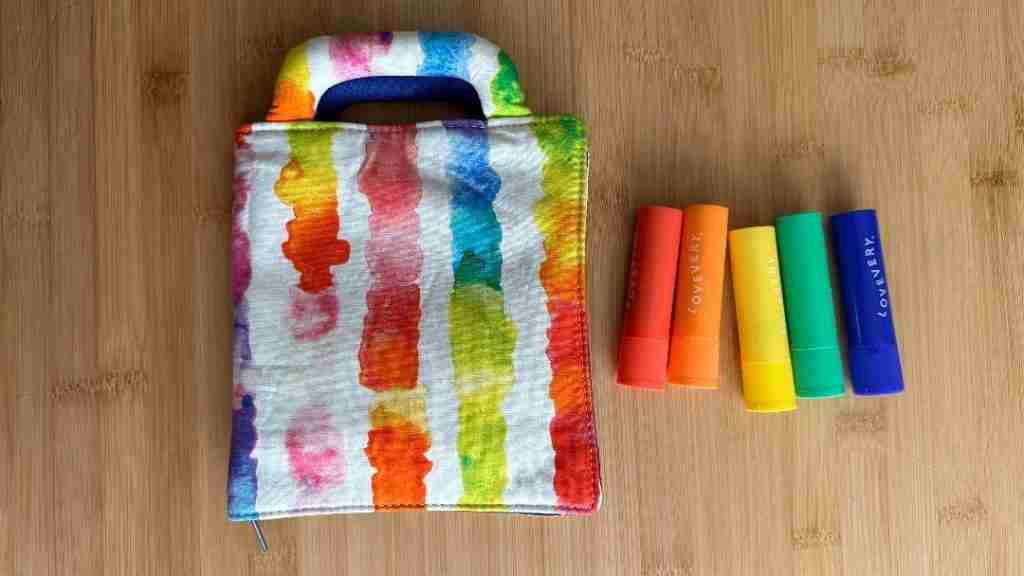
Our daughter loves painting and the paint sticks are a great no-mess activity for any child.
But honestly, there is nothing special about the paint sticks. We have lots of crayons, coloring books, and chalk and our daughter does fine with those.
So this item just added more stuff to her activity bag and now there are way too many options for her.
Plus once you use up all of the paint sticks, you can’t buy them individually.
The Routine Cards
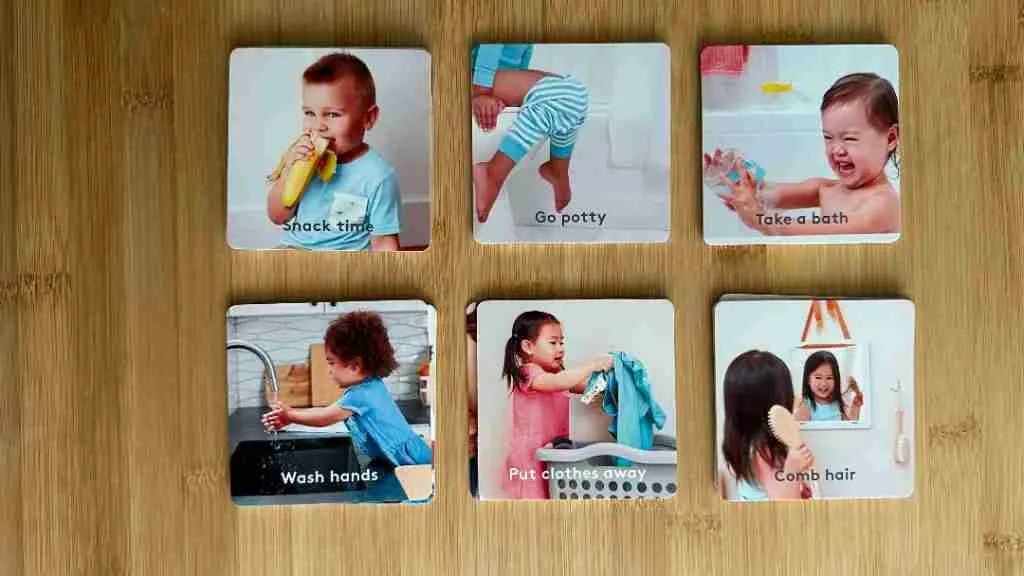
We are not going to use these cards, mainly because we want our daughter to be intrinsically motivated to do something rather than being influenced by external factors.
Plus routine cards are not Montessori. Our daughter likes to do things like cleaning, feeding our dogs, brushing her teeth, and taking a bath because she understands the importance of doing these things.
We think it is more important to involve your child in everyday activities so they naturally learn to help rather than following some cards.
The Board Book

The book is nice and we like how real images are used in the book.
But how many books do you have? Do you need another book?
We have lots of books that get rotated and having an extra book was not necessary. Plus every time we buy a new book or check one out from the library, we let our daughter choose it.
So while the book is nice, you’ll be OK without it.
My final thoughts on the Lovevery Helper Play Kit
We’ve been raising our daughter Montessori from day one and we are intentional about the activities and toys we provide.
Our daughter was interested in only some of the items in the kit so we’ll continue to use those items.
We put away some of the items like the book and routine cards and we are not sure if she will continue to use them.
You should also need to have a plan so you only use one or two items at a time. It is easy to open the box and give your child all of the items in the kit.
This can overwhelm your child and they will not fully benefit from these items.
I wish the guide would give you a progression plan since Lovevery focuses on helping your child improve their development one skill at a time.
Overall I think this is a great kit and is worth the investment if you can afford it.
How much does Lovevery kit cost?
Here is the price breakdown for the Lovevery Play Kits:
- Age 0-12 months: The price per kit is $80. You will get a new kit every 2 months for a total of 6 kits.
- One year old: The price per kit is $120 and you will get a new kit every 3 months for a total of 4 kits.
- Two-year-old: The price per kit is $120 and you will get a new kit every 3 months for a total of 4 kits.
- Three-year-old: The price per kit is $120 and you will get a new kit every 3 months for a total of 4 kits.
- Four-year-old: The price per kit is $120 and you will get a new kit every 3 months for a total of 4 kits.
Are Lovevery Play Kits worth the price?
I think the biggest benefit of the play kits is convenience. You are getting a box with the only items you need for your child’s development.
I recommend them if you need help finding the right toys that help develop your child’s skills.
But you have to fit it into your budget. If you have $80 to $120 to spend every 2 to 3 months respectively, then yes the Play Kits are worth the price.
Lovevery FAQ
Here are the answers to some of the most asked questions about Lovevery.
No. You have to enroll in the subscription. But the good thing is that you can cancel at any time and then enroll again when you are ready.
So if you only want one kit, enroll in the subscription and then cancel it when you get the kit. Then 6 months down the line you can enroll again and repeat the process.
The only Lovevery products that you can buy Individually are the Play Gym, Montessori Shelf, the Block Set, and a few other accessories.
Lovevery is Montessori-inspired. I’ve been working in the Montessori setting for a very long time and I can tell which toys align with the Montessori philosophy.
Most products from Lovevery follow the Montessori philosophy when it comes to child development.
Lovevery uses plastic in a lot of their toys which is contrary to the Montessori philosophy that encourages the use of natural materials like wood.
Yes, every product I own from Lovevery has a “Made in China” label.
Lovevery manufactures its products in Ningbo, China at the Hape International Inc. facility. Hape is a German company that also makes kids’ toys.
Lovevery makes its products using sustainably harvested wood, organic cotton, nontoxic paint, and baby-safe plastics.
They use eco-conscious materials like FSC-Certified Wood, organic cotton, and biobased plastic in some of their products.
What to do next?
That was our full review of the Lovevery Helper Play Kit. The kits are curated to nurture your child’s development but they are expensive.
If you have the budget, by all means, enroll in the subscription. But with a bit of creativity, you can curate your own kit and enjoy the same benefits.
You can check out my article about the best Montessori toys by age where you can find other great alternatives.

Hello, I am Leslie. I am on a mission to help you support the growth and development of your child. With the right tools and proper guidance, you can navigate parenthood with confidence and assertion! My goal is to equip you with knowledge to help you construct a strong foundation for your child’s life.
Suggested articles
You May Also Like
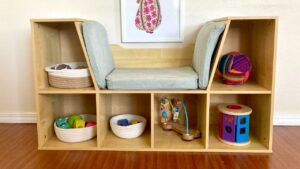
11 Effortless Ways to Create a Montessori Environment at Home
This comprehensive guide will help you create a Montessori environment at home to encourage learning, development, and independence in your children.

5 Best Shoes For New Walkers: Podiatrist Approved
The best shoes for new walkers are the First Walkers by Ten Little. because they are approved by the American Podiatric Medical Association (APMA).
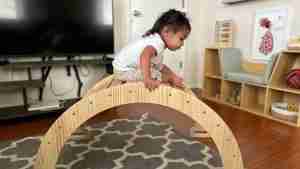
How To Introduce A Pikler Triangle To Your Baby
The best way to introduce a Pikler triangle to your baby is to allow them to touch it and naturally explore it.
